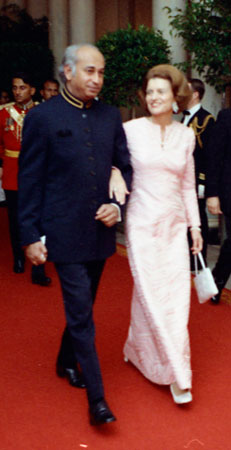
Betty Ford - An Extraordinary Life
at the Ford Museum October 17, 2010 - February 27, 2011
The Washington Post featured Mrs. Gerald R. Ford, then the wife of a young Congressman, in an April 4, 1954 article.¬Ý In that article the author described her as having ‚Äúa penchant for ‚Äòquiet‚Äô suits and ‚Äòslightly more talkative‚Äô hats.‚Ä?¬Ý As the country learned two decades later, Betty Ford was anything but quiet.¬Ý Her openness about breast cancer, the 60 Minutes interview, vocal support of the Equal Rights Amendment, and public disclosure of her substance abuse treatment showed the nation that she was honest, open and not afraid to speak her mind.
Much about the role of America‚Äôs first lady has changed since our nation was formed.¬Ý At first, she was seen primarily as the White House hostess,resident decorator, and the president‚Äôs representative at ceremonial functions.¬Ý We now expect the first lady to be an active partner to the president, taking on causes and speaking out on issues important to her.
Some of the change we have seen is due to shifts in attitude toward women‚Äôs roles generally.¬Ý Often times, however, much depends on the personality and style of the individual first lady. Like the role, the title of first lady has also evolved.¬Ý Though not an official title, the term first
In his eulogy for Dolley Madison, President Zachary Taylor used the term first lady, and, in 1860, Leslie’s Illustrated Monthly called Harriet Lane, niece and White House
I do not believe that being First Lady should prevent me from expressing my views ‚Ķ¬Ý Why should my husband‚Äôs job or yours prevent us from being ourselves?¬Ý Being ladylike does not require silence.
Betty Ford
One of the most challenging, difficult, controversial and sensitive positions in America is that of first lady.¬Ý Public interest in the wife of a president is intense, and expectations are high.
Jimmy Carter
I long to hear that you have declared an independency —and by the way in the new Code of Laws which I suppose it will be necessary for you to make I desire you would Remember the Ladies, and be more generous and favourable to them than your ancestors. Do not put such unlimited power into the hands of the Husbands. Remember all Men would be tyrants if they could. If perticuliar care and attention is not paid to the Laidies we are determined to foment a Rebelion, and will not hold ourselves bound by any Laws in which we have no voice, or Representation.
Abigail Adams to John Adams, 31 March 1776
http://www.masshist.org/adams/quotes.cfm
There are many examples of prior first ladies who were more active and outspoken than we traditionally imagine, though it is during Eleanor Roosevelt’s years as first lady that we think of the major shift from wife and hostess to more issue-oriented women in their own right.
Sarah Polk, wife of our 11th president, lobbied Congress on behalf of her husband‚Äôs efforts to annex Texas.¬Ý Lucy Hayes was often referred to as Lemonade Lucy because of her support of the Temperance movement.¬Ý Edith Wilson was accused of being the ‚Äúsecret president‚Ä? for work she undertook on his behalf following her husband‚Äôs stroke.¬Ý Florence Harding, first lady from 1931 ‚Äì 23, supported both the vote and careers for women.¬Ý Eleanor Roosevelt, in addition to serving as White House hostess and taking an active role in FDR‚Äôs administration, had a career of her own.¬Ý In the years following Eleanor Roosevelt‚Äôs time in the White House, we have seen the first lady‚Äôs role evolve more quickly, consistently, and often dramatically, as in the case of Hilary Rodham Clinton.¬Ý As first lady, Mrs. Clinton chaired the President‚Äôs Commission on Health Care, and, after her years as first lady, ran successfully for the U.S. Senate, was a contender for the Democratic nomination for president in 2008, and currently serves as the United States Secretary of State.